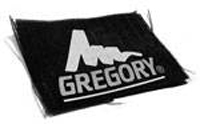In March 2008, Gregory Mountain Products became an independent company when it was acquired from Armor Holdings, Inc. by KSS Outdoor Holdings, LLC in an all-equity, zero-debt deal (BOSS_0813). Since the transition last March, the company has seen a significant improvement in sales and has been making great strides toward achieving the goals it set a year ago – extending its brand position both domestically and internationally.
In order to accomplish these goals, Gregory has worked to streamline its business. Shortly after the acquisition, it moved from Temecula, CA (just north of San Diego) to a permanent location in Sacramento, CA, a redesigned, eco-friendly historical building easily reached by foot for many employees. The company has filled around 30 new positions and plans to fill another four this year.

“The key to the new ownership structure is there are far fewer layers in terms of management,” commented Jim BoisD'Enghien, Gregorys director of sales and marketing, in an interview with The B.O.S.S. Report. “We work directly with the management team. It really allows us to invest and fuel future growth opportunities. [Its a] much flatter organization, but a much stronger organization as a result.” He told B.O.S.S. he thought the morale was the best since he joined the company in early 2007 from Atlas Snowshoes. BoisD'Enghien attributed the positive change to the new Sacramento location and the hiring of new, dedicated employees.
Some of the initial actions the company took toward achieving independence focused on cutting unnecessary costs in order to focus on expansion.
“We worked on pruning down the line, took a look at slow-moving products and decided to realign product categories,” said BoisD'Enghien. “[We worked to] bring us back to the core products and rebuild out organically from there [to] restructure our categories and start to layer in where were missing key products from specific areas.”
Although Gregory has physically moved and expanded its ranks, the ownership structure remains the same. Jon Simmons remains president of KSS. Former Gregory CEO Warner Kanders and Robert Schiller, former COO and president of Armor Holdings, round out the group.
Shortly after Gregorys management buyout, KSS said that it was looking to purchase other outdoor brands. In the year since that announcement, however, the group still has yet to make any purchases, slowed by the difficult economic period.
Looking at sales, BoisD'Enghien stated that since the acquisition, Gregorys global business has grown significantly. New markets such as Europe and Canada have grown substantially, while the companys core markets of Japan and the U.S. have been “growing in a meaningful way.” He continued to say that since he joined the company two years ago, when it was coming off of a sales decline, it has experienced “substantial double-digit growth and some triple-digit growth, depending on the market.”
Discussing global growth, BoisD'Enghien remarked that Gregory has opened retail stores in Tokyo and Seoul to reinforce the brands position.
“Were reinvesting in the right resources in each of those markets,” BoisD'Enghien said. “I think the global position has been a key focus for us its an area where we let the company grow more organically.” He said the company sells a more heavily-concentrated lifestyle program in Japan than in the U.S., where the brand features more technical products.
Within product categories, the big packs have apparently seen the most growth, a figure which has been supplemented by the companys new retailer support programs. An example of such a program is Gregorys new “fit jig,” which helps measure a customer on the retail floor for their proper fit in Gregory packs. The new device measures multiple aspects of the customers frame, including appropriate pack, harness and waist size, making it easier to do point-of-sale fit on larger packs and packs carrying heavier weights.
“Theyre in the store today,” said BoisDEnghien. “So this brings the custom fitting message right to the retail floor.”
The shift in company structure has not only made a positive impact on the companys budget and future, but also on its retailers, said BoisDEnghien. Because Gregory is a smaller company, it is in constant communication with the ownership team and is therefore able to react more quickly to global trends. “[The company is more] focused on the branding side in delivering an improved platform. For example, [we have] a better website that tells a better brand story, our products and position Were about to launch in 2010 a new concept that will reinforce at retail our message.”
To further help retailers, Gregory has broadened its communications platform, giving retailers and consumers more ways to reach the company. The companys redesigned website features a blog to keep the outdoor community aware of whats happening internally at the company, while Gregory also releases monthly trade newsletters that address events happening within the community.
Ultimately, though, a large part of Gregorys ability to survive the difficult trading environment and tightening credit markets is simply due to the companys lack of debt, a rarity among businesses today.
“I think were really fortunate in that when the company was purchased it was all equity and no debt,” commented BoisDEnghien. “[Now] its still no debt and were able to sustain on our own cash flow. The ownership team is not taking any of the equity out of the company, so we have the ability to invest in key products, or full-time employees, to reinforce our growth trajectory independently of credit. We have a credit line set, we are just fortunate enough not to have to use it at this time.”









